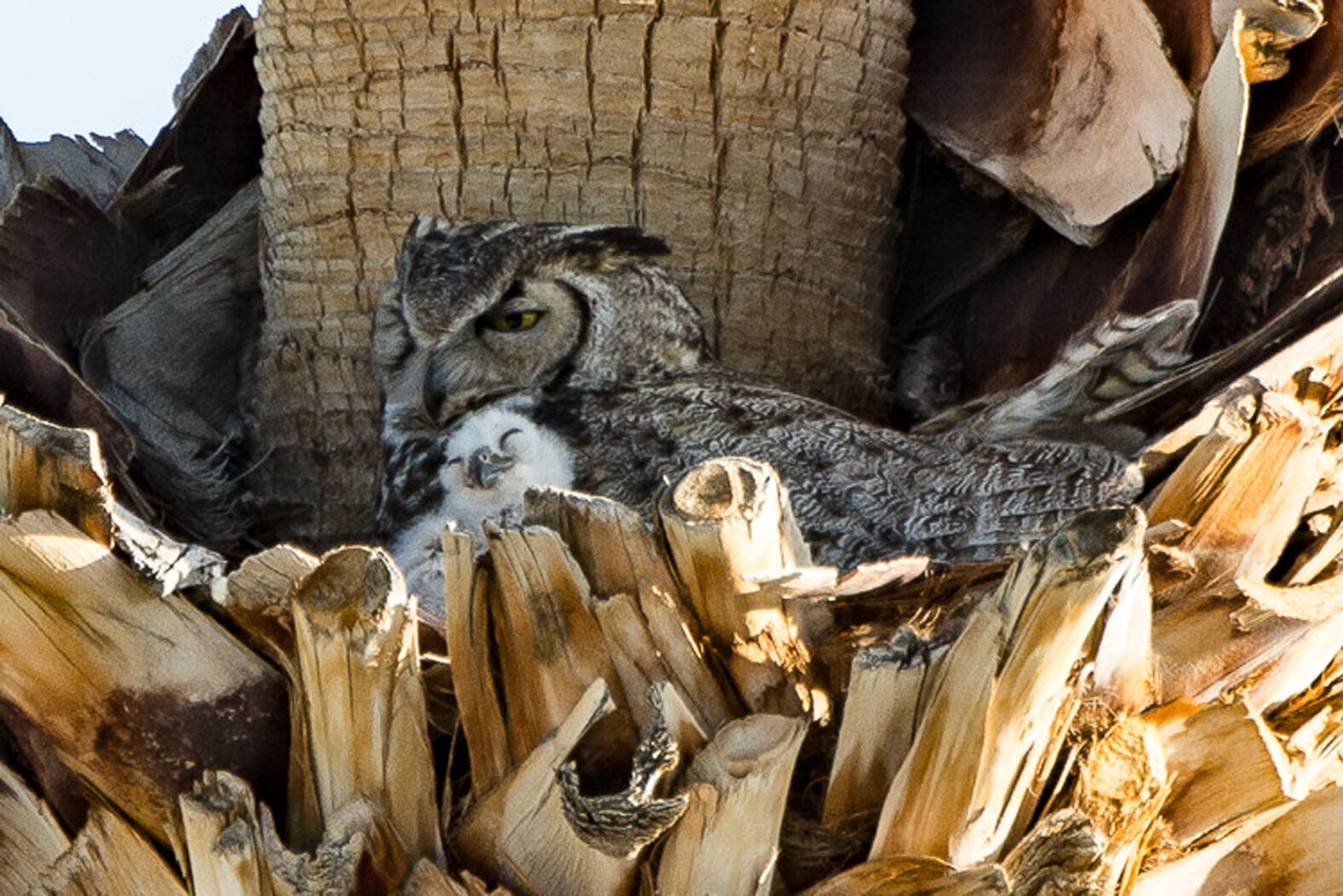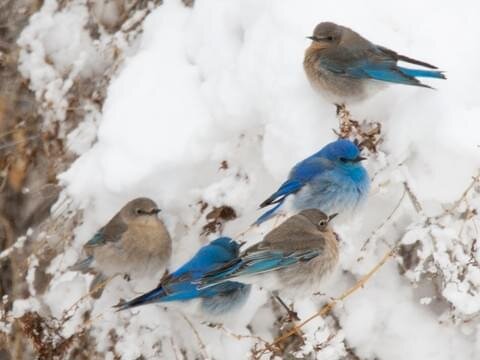Leaves fluttered and whipped in the desert wind. The cottonwoods, tall signposts of water and life, usually held the birder’s gaze as binos and cameras caught glimpses of feathers and flights. Necks craned painfully to catch sight of the sleepy owl reported in the palm tree recesses. All that was seen was the long dribbles of guano giving away the elusive bird’s resting spot. A bluebird flock swung crazily in the now increasing onslaught of the Santa Ana. Blue skies were a memory as the clouds covered the sun again and again. Fleeces testified to a winter coolness in the high desert and hands were rubbed and quickly returned to pockets after searching in vain for a spotters excited call. ‘
What was it?”
“Could have been a Coopers.”
“Well darn and he scared what few birds were out.”
The group moved on. More intense discussion replaced idle chatter as heads bowed and hands remained in pockets. Groups of two or three talked of previous birding walks and rarities. An occasional spotting of white crown sparrows popping out of bushes received only a nod or two. The birders talked of mutual friends, the sad state of a world with diminishing birdlife, exciting trips to far flung places to see, what else, birds, and most importantly where to have lunch. And so, they walked through the rest of the usual places. Trees and spots had been named for the continued sightings of perhaps a woodpecker or phoebe; the ‘sapsucker tree’ or the telephone post that usually held a kestrel.
The yellowed fall leaves crunched underfoot. The wind died down and the blue patches of sky broadened. None of the birders wanted to be any other place than this small preserve. Nature enfolded them and helped them understand that the birds and lizards go about their lives in a measured sometimes fatal regularity. Food, nesting, procreation, raising young, molting, eat or be eaten and occasional ‘flights of fancy. As a permanently amateur birder I relish the understanding of how each creature builds upon each other. Where would we be without the insects? Our flock of human observers may put us on some sort of pyramidal ‘top,’ but we know a circle is more like it. The ‘bottom creatures’ suddenly become the force filling the sails as the hapless mariner can only grab the handrails and become the hunted.
A sudden shout disturbed the group and like a flock of pigeons we all turned toward the raised pointed hand. Binos to our eyes, we caught the eye-popping sight of perching bluebirds, their backs facing the sun, a most glorious blue. Our lives became just a little brighter.
Photo courtesy of Read Howarth
Photo courtesy of All About Birds



